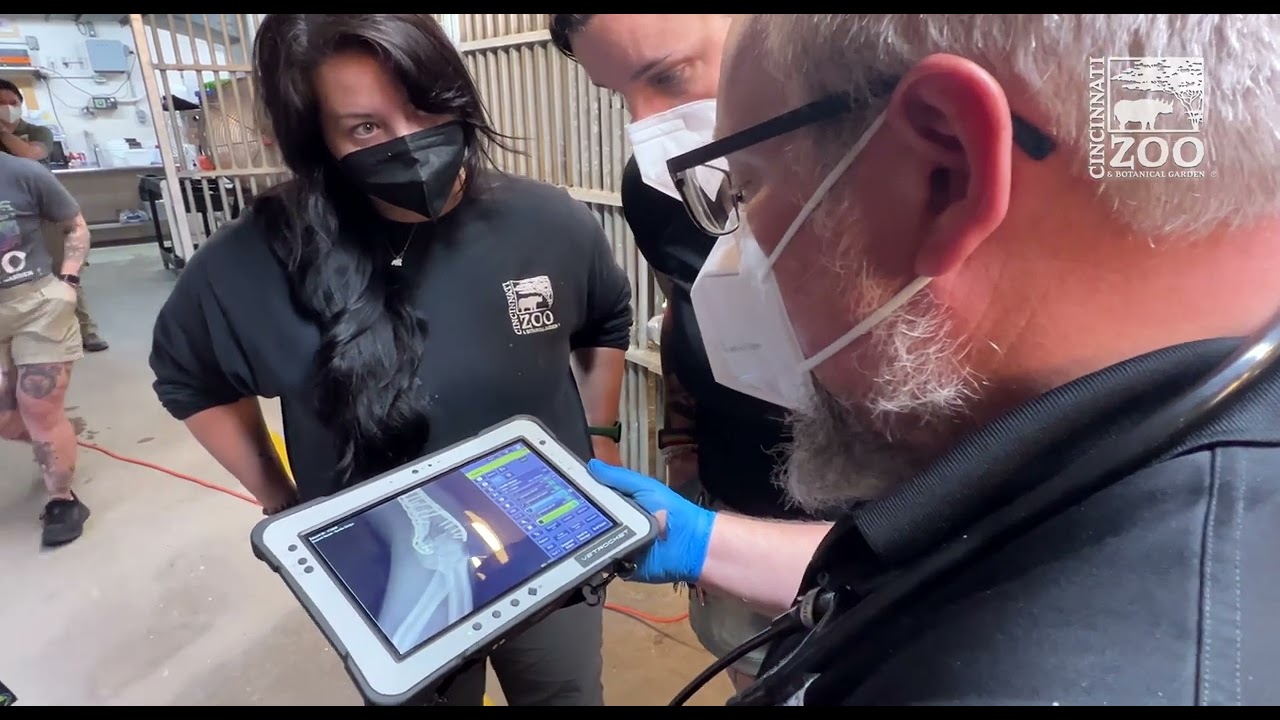- The innovative application of titanium casts in veterinary medicine for large mammals, exemplified by the case at the Cincinnati Zoo
- The specific care and rehabilitation process for injured gorillas, with a focus on the use of advanced materials
- The broader implications of such medical interventions on wildlife conservation efforts
- The role of zoos in advancing veterinary techniques and contributing to species preservation
- Strategies for public education and engagement in conservation through the lens of individual animal stories
The recent medical intervention at the Cincinnati Zoo, where a young gorilla was fitted with a titanium cast to aid in healing a limb injury, stands as a testament to the strides taken in veterinary science, particularly concerning the care of large mammals. This case is a milestone in zoo-mediated animal care and underscores the complex interplay between technology, wildlife conservation, and public education. This article aims to dissect the multifaceted aspects of the young gorilla’s treatment and recovery process, exploring its broader implications for similar future endeavors.
The use of titanium, a material heralded for its strength, lightweight nature, and biocompatibility, marks a significant advancement in veterinary treatments for large mammals. Though not widespread, titanium casts provide superior support and durability, especially critical for the active and robust nature of gorillas. At the Cincinnati Zoo, the application of such a cast demonstrates a pioneering approach to animal healthcare, blending engineering and medicine. This leap in treatment options opens the door to more successful rehabilitation outcomes for injuries that were once considered challenging to manage.
Delving deeper into the care and rehabilitation process for the injured gorilla, it’s evident that the zoo’s veterinary team has not only leveraged advanced materials but also adopted a holistic approach to recovery. This encompasses regular monitoring, physical therapy, and modifying the gorilla’s habitat to accommodate its temporary limitations. Such meticulous care highlights the zoo’s commitment to ensuring the wellbeing of its inhabitants, reflecting broader standards in zoo management and animal welfare practices.
Moreover, the successful application of the titanium cast and the ongoing recovery process at the Cincinnati Zoo carries significant implications for wildlife conservation. This case serves as a proof of concept, showcasing how innovative treatments can be integrated into the care of endangered species, potentially offsetting the impact of injuries that could otherwise have dire consequences on their survival prospects. It exemplifies how zoos play a crucial role in conservation science, extending beyond the confines of animal care to contribute to species preservation efforts globally.
Zoos like the Cincinnati Zoo’s role in advancing veterinary techniques further solidifies their position as critical players in wildlife conservation. By pioneering new treatments and recovery strategies, zoos provide invaluable insights that can be applied in broader contexts, including wildlife rescue operations and conservation projects in natural habitats. This contributes to a growing body of knowledge that aids in preserving endangered species and fosters a more sustainable coexistence with nature.
Finally, the story of the young gorilla’s recovery is a powerful tool for public education and engagement in conservation efforts. By sharing the journey of the gorilla and the innovative treatments employed, zoos like the Cincinnati Zoo can engage the public in conversations about wildlife conservation, the challenges endangered species face, and the importance of technological advancements in animal care. These stories inspire people and highlight the direct impact of conservation efforts, fostering a deeper connection between the public and the natural world.
In summary, the case of the young gorilla at the Cincinnati Zoo receiving a titanium cast for its injured limb is more than just a medical success story. It represents the forefront of veterinary science, the role of zoos in wildlife conservation, and the power of shared stories in inspiring public engagement. As we move forward, such initiatives are critical in shaping a more informed and conservation-minded society poised to support preserving our planet’s precious wildlife.
*****
Source Description
Checkup Shows Young Gorilla’s Titanium Cast is Doing What it Was Specially Designed to Do – Cincinnati Zoo vets see much improvement in Gladys’ broken arm. Veterinarians at the Cincinnati Zoo & Botanical Garden say that 11-year-old gorilla Gladys’ arm, which was broken a month ago in a scuffle with her siblings, is healing well. They examined her yesterday to see if the world’s first 3D-printed titanium cast, custom designed by Colibrium Additive – a GE Aerospace company, was doing what they hoped it would do.
http://support.cincinnatizoo.org/donate
Subscribe: https://www.youtube.com/user/CincinnatiZooTube/featured
Facebook: https://www.facebook.com/cincinnatizoo/
Twitter: https://twitter.com/CincinnatiZoo
Instagram: https://www.instagram.com/cincinnatizoo/
Find out more at http://www.cincinnatizoo.org


